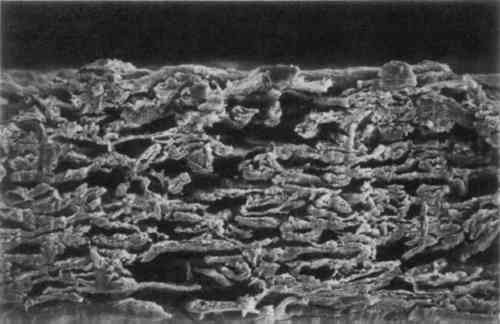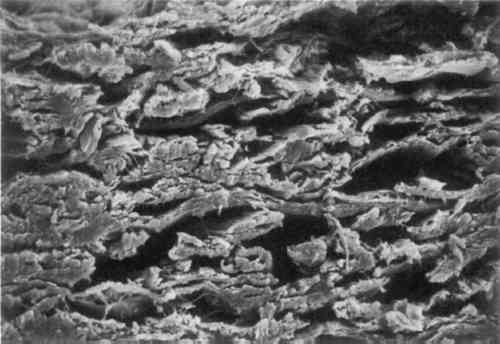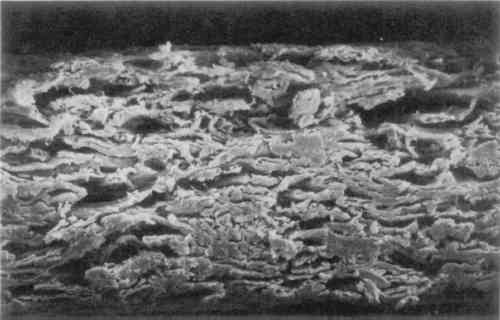CHEMICAL WATERMARKING OF PAPER
STEPHANIE WATKINS
3 MICROSCOPIC EXAMINATION
SOME OF the objectives of an early chemical watermark patent were to form watermarks “involving the adequate displacement of entrained air,” “replacing air in a paper product with a material having an index of refraction similar to that of cellulose,” and “by impregnation thereof to replace entrapped air in a localized area” (Vaurio 1963). To determine whether the watermarked materials interact with the paper as the patent states, the papers were examined under magnification.
Scanning electron microscope (SEM) images were taken of the cross-section of the GE watermarked paper. Two magnifications, 500� and 1000�, were used on both the plain paper and the chemically watermarked areas. The images produced are disappointing, as the material is indiscernible from the fibers. However, it is apparent that the chemicals “swell the fibers somewhat and close up the sheet” (figs. 1–4)(Block 1989).
Fig. 1.
SEM cross-section, paper area, GE sample, �500 (1989)
 |
Fig. 2.
SEM cross-section, paper area, GE sample, �1000 (1989)
 |
Fig. 3.
SEM cross-section, chemical watermark area, GE sample, �500 (1989)
 |
Fig. 4.
SEM cross-section, chemical watermark area, GE sample, �1000 (1989)
 |
|



